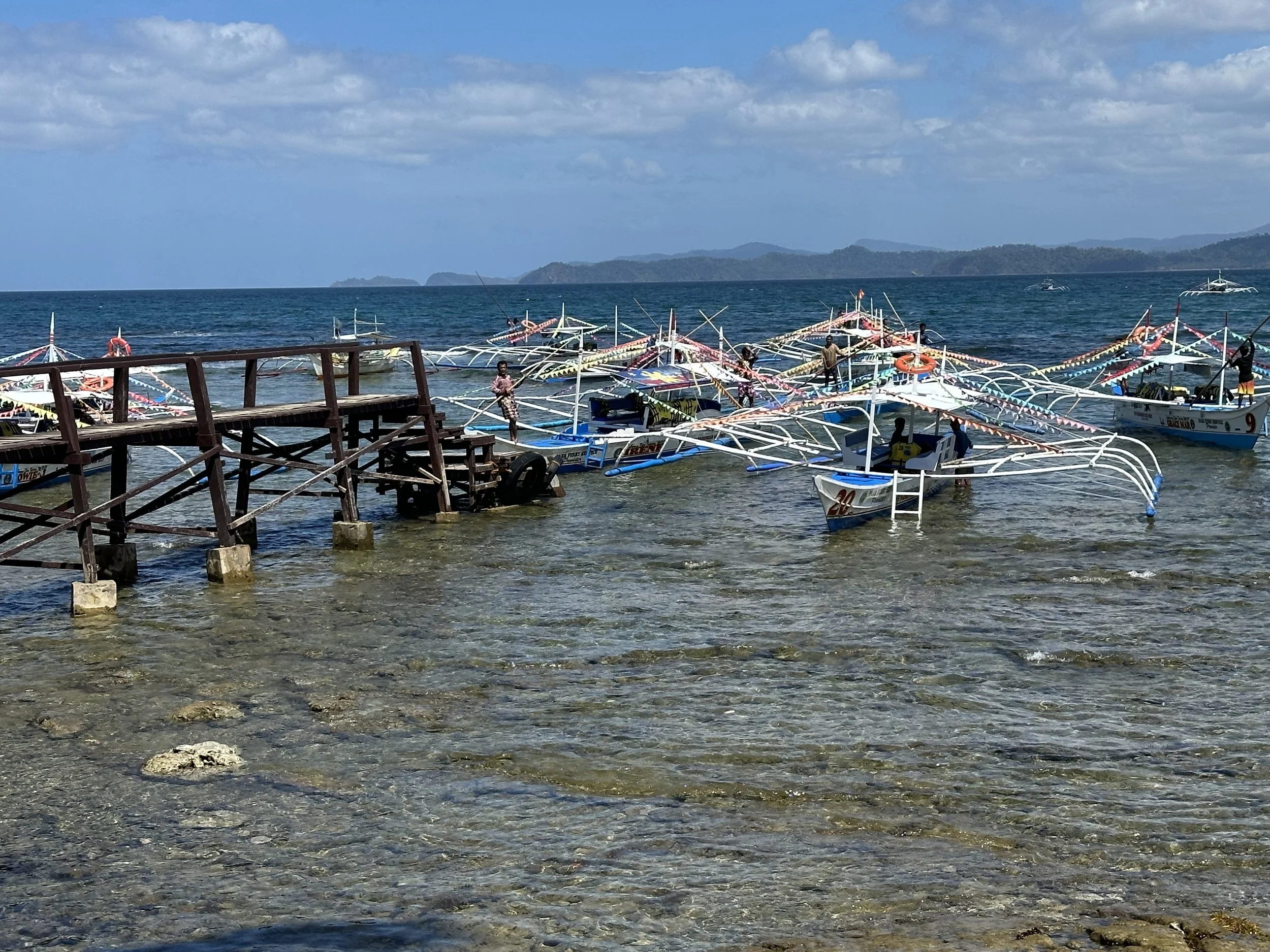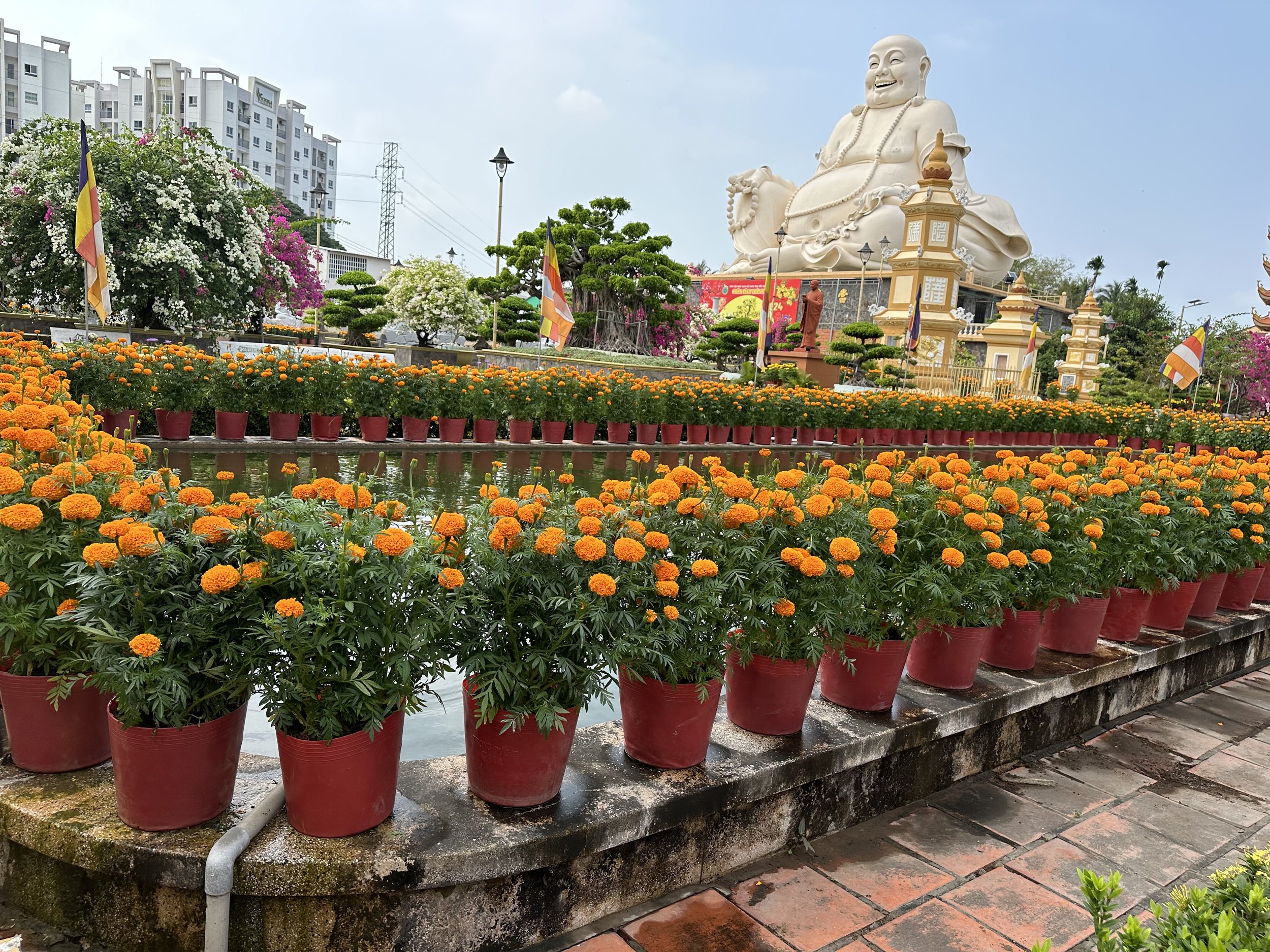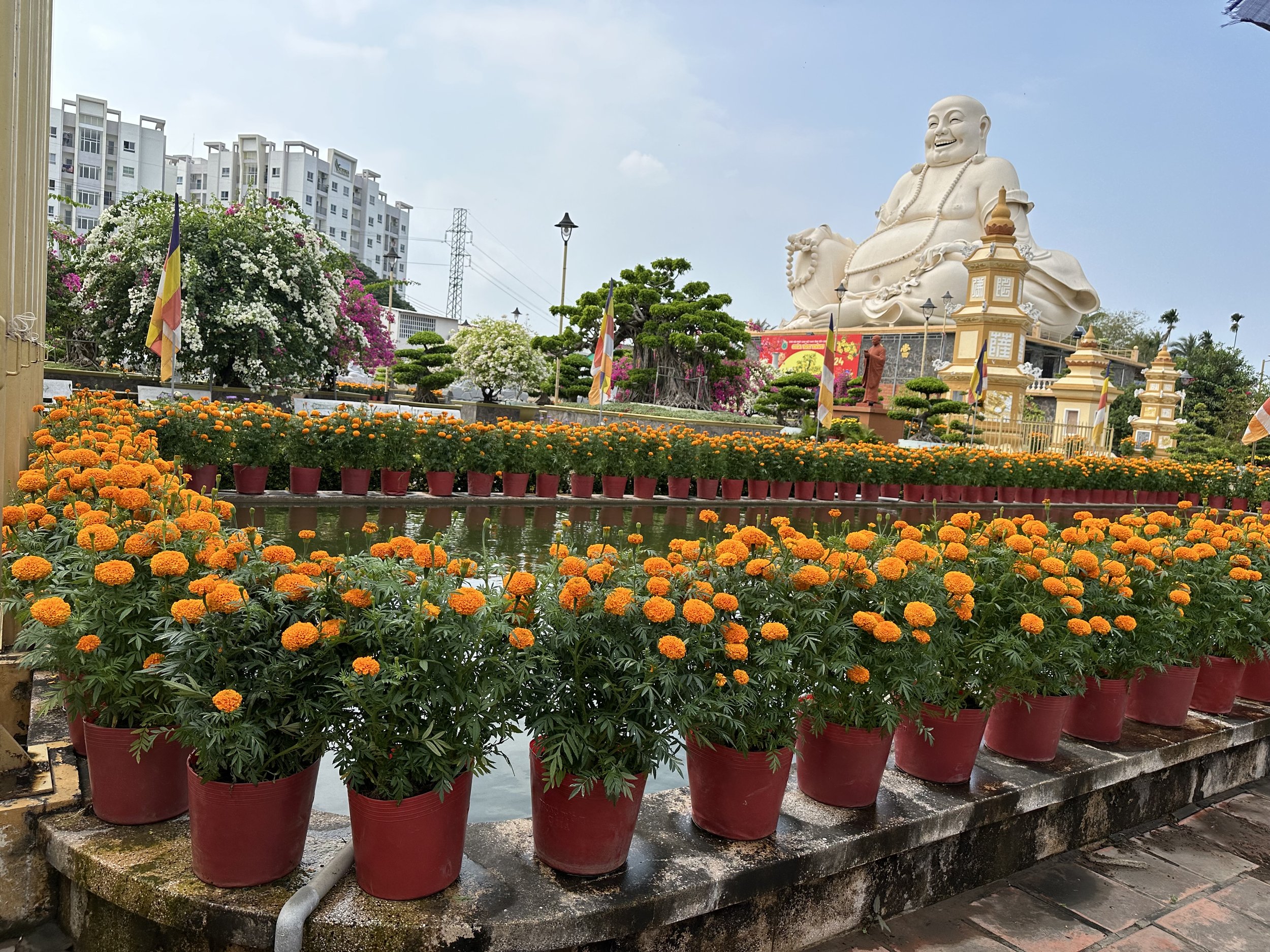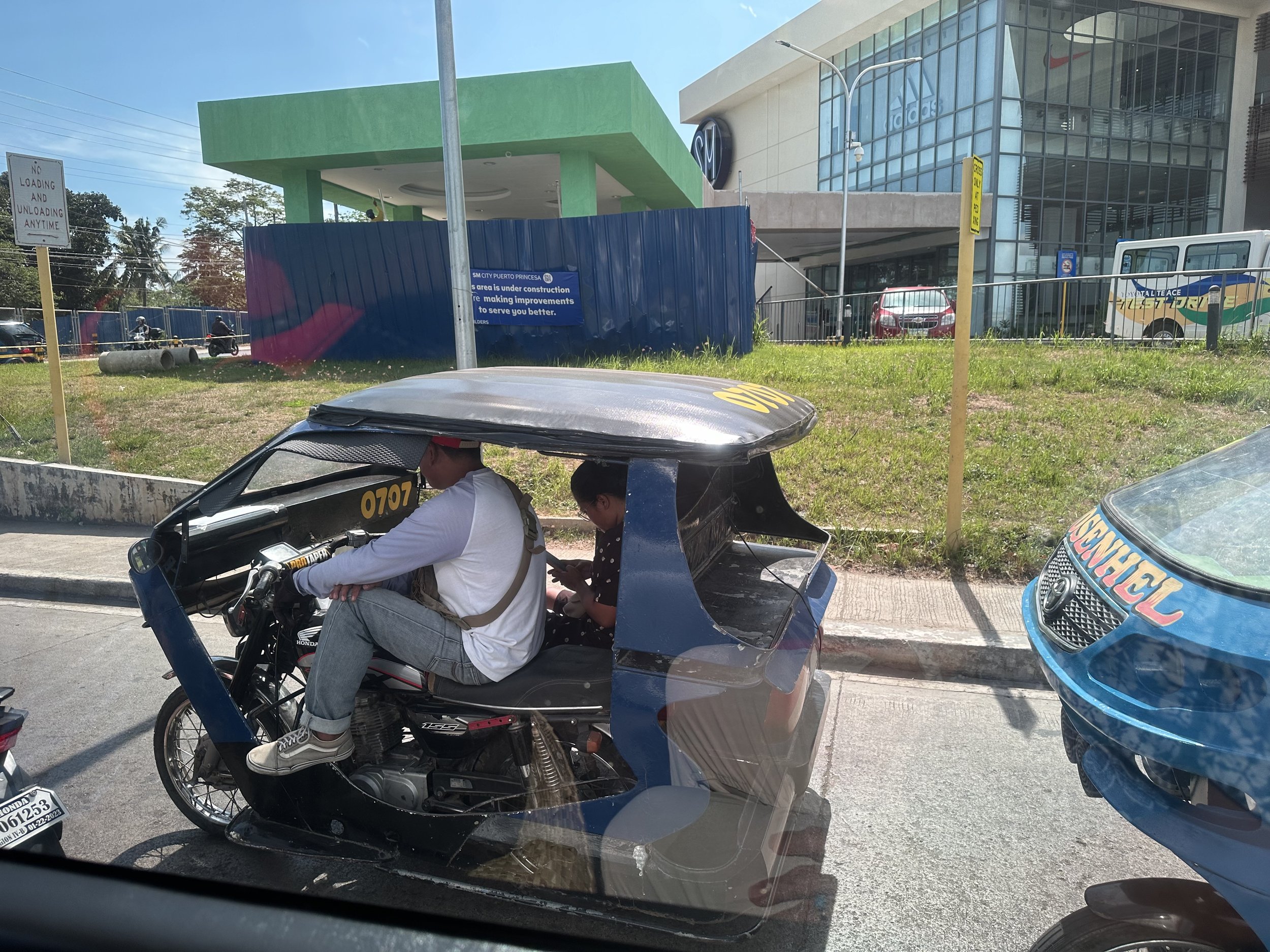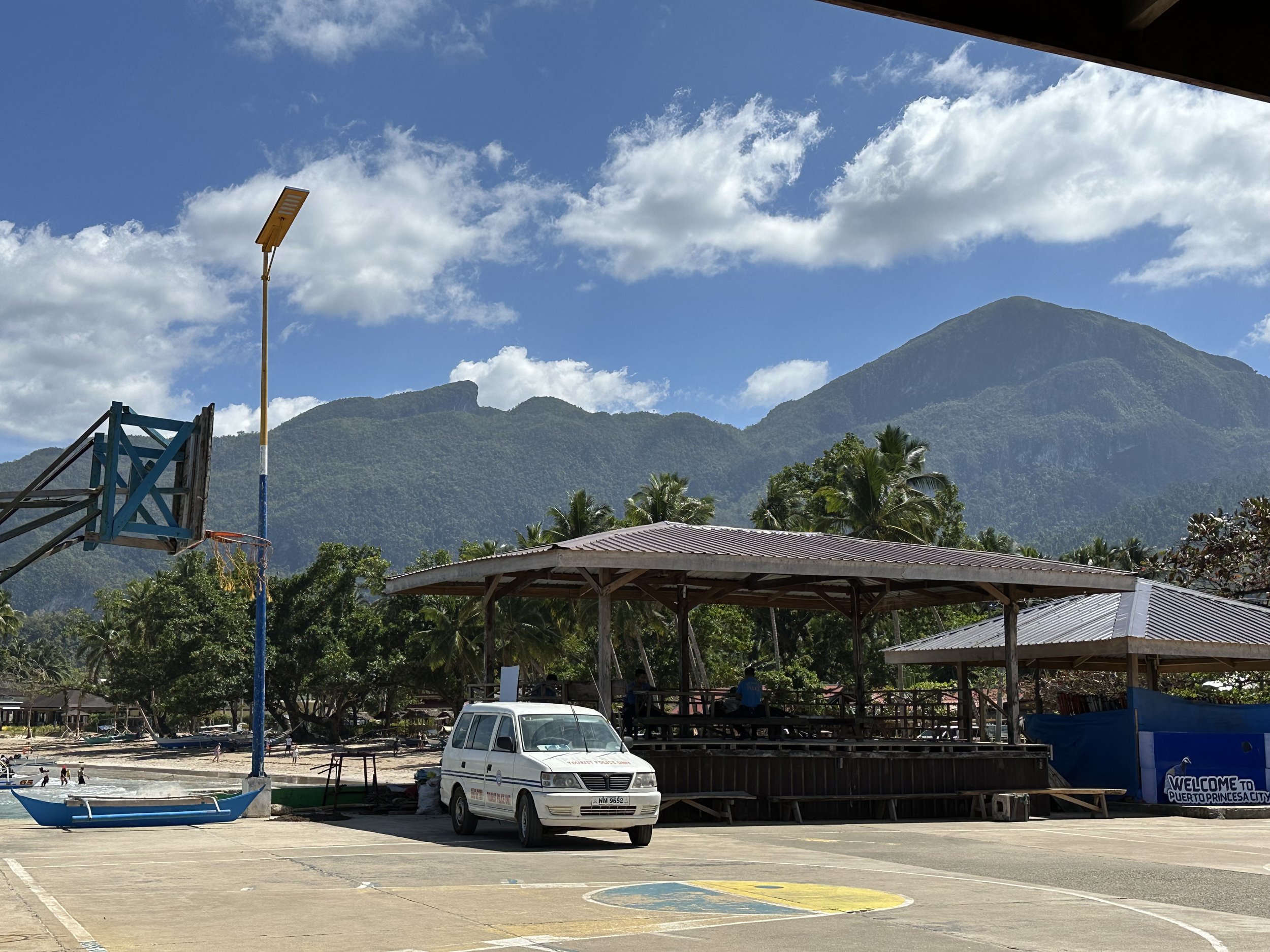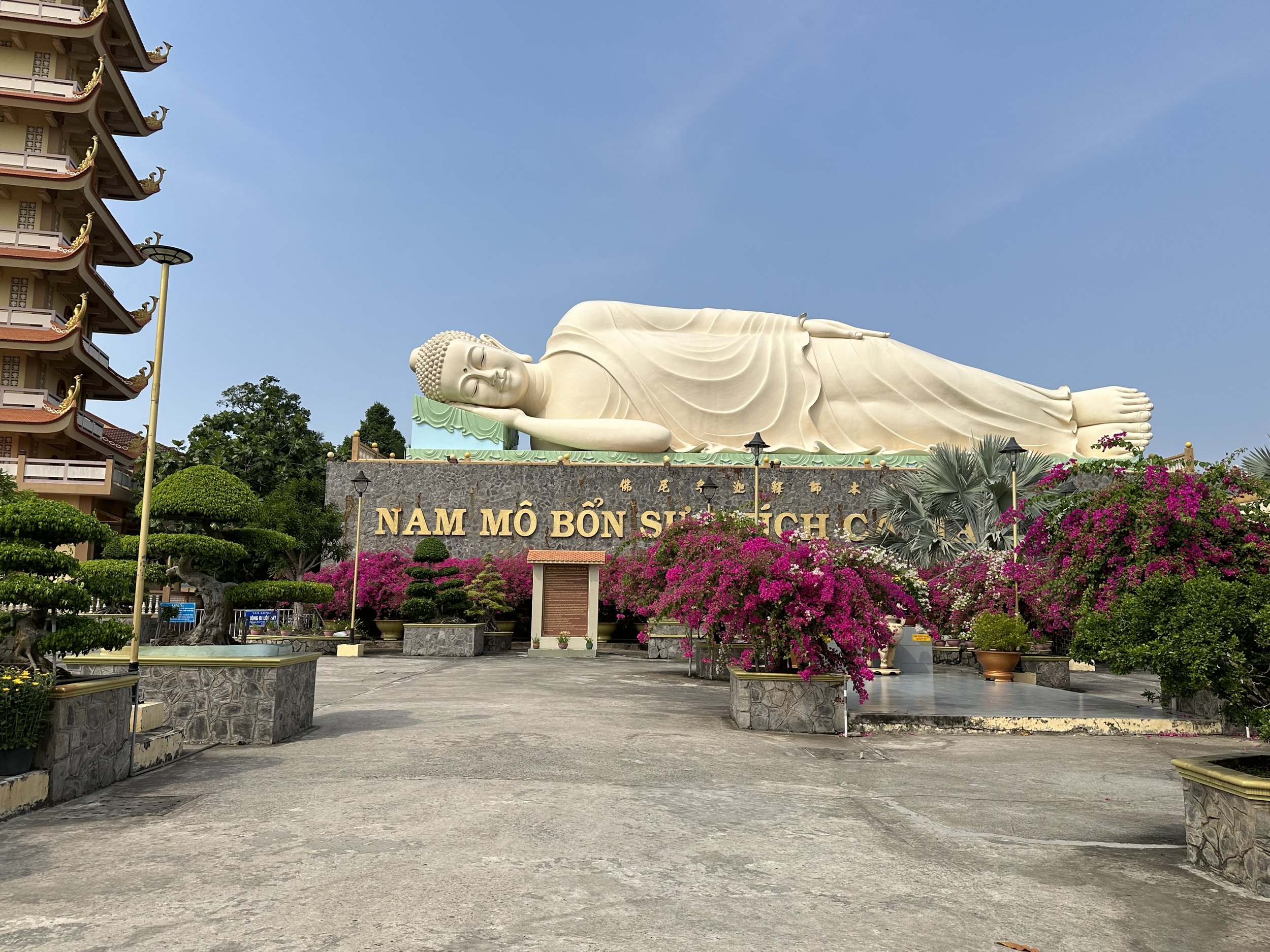Our Arrival in. Puerto Princesa, Phillipines.
Puerto Princesa City sits in East -central Palawan, Philippines where to is an important port on the sheltered inlet of the Sulu Sea, South of Honda Bay . It was formerly known as Cayo.
It was the sited of a former penal colony during the Spanish Regime and in latter years has been employed as a resettlement site for migrants from Luzon and the Western Visayan Region.
It has a range of agricultural export industries including lumber, Copra, Rattan and a mix of livestock are exported from the port.
It is also the only site for Cinnabar ( an ore from which mercury is extracted) and this is worked at the nearby village area of Tagburos. Metallurgical grade chromite is also produced and refined.
Puerto Princesa is also the home to a large and growing fishing industry and also has scattered sawmills and logging operations.
There are beautiful game reserves and refuges as well as bird sanctuaries nearby.
Rainforests and white sand beaches are a couple of hours away from the city proper. It is still a relatively young settlement and was established as a city in 1970. First settlers arrived almost an hour earlier in on 4 March, 1872.
This is celebrated every year as foundation day of Puerto Princesa, it is a sprawling city of 253,000 hectares stretched over 106 kilometres.
Inhabitants number 211,000 most engaged in fishing and agriculture .
We visited the underground river of St. Paul and used several types of boat.
The following photos are a reflection of the rural beauty.
The photos reflect the outrigger boats which take us from the port area to the Beach from where we then walk through a beach area and inland to the Horizontal river , where we board small boats rowed by a local. We ride through a series of caves and come across a river which is in and through the Caves.
